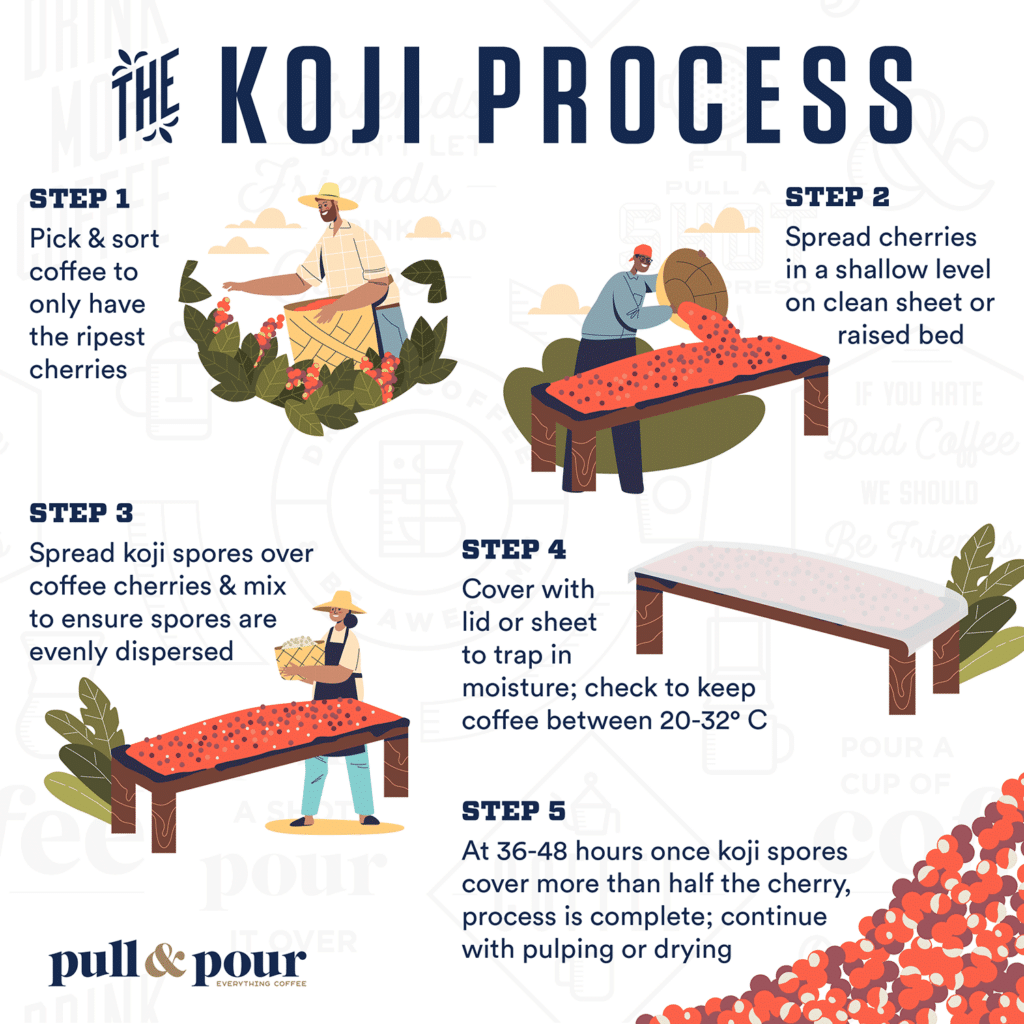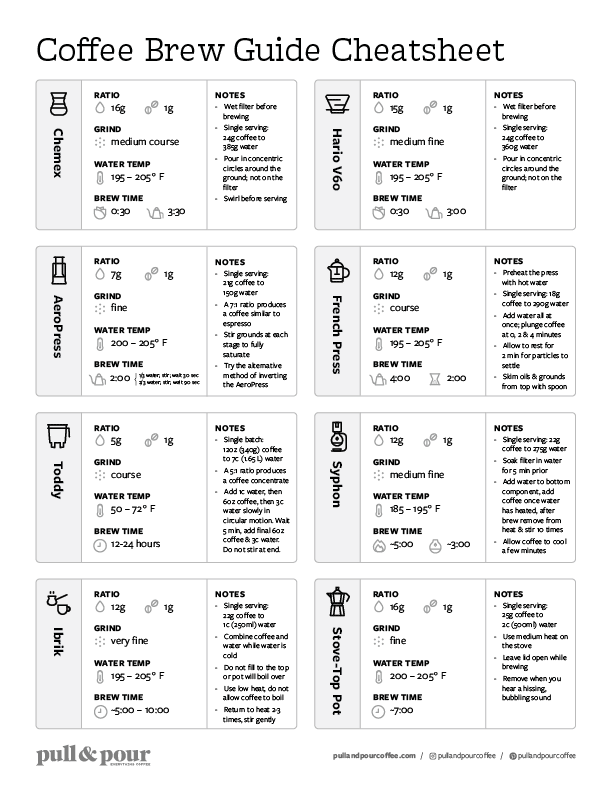Gone are the days of only washed, natural, and honey processing—in are the days of thermal shock, IPA anaerobic, and more. There are a lot of crazy and innovative processing methods out there nowadays, but one of the most intriguing is the Koji process.
The Koji process is a relatively new processing method developed by Kaapo Paavolainen, Christopher Feran, & Forest Coffee. With the Koji process, you sprinkle Koji spores, which are filamentous fungi traditionally used to ferment soybeans into miso or soy sauce, onto the ripe coffee cherries. The Koji unlocks sugars unavailable during fermentation with traditional yeast or bacteria. It produces glutamate in the coffee & breaks starches into fermentable sugar, which leads to enhanced complexity, structure, aroma, & sweetness.
What are the steps of the Koji Process?
The Koji process requires a few specific steps to lead to the most favorable results. The steps to the Koji process are:
- Pick and sort only the ripest cherries. The cherries should be blood-red or burgundy and only extremely ripe.
- Spread the coffee cherries in a shallow level on a clean sheet or raised bed. The cherries should only be 2-3 cherries deep.
- Spread the koji spores over the coffee cherries & mix to ensure the spores are evenly dispersed. The ratio of koji to coffee cherries should be 1g koji spores to 1kg coffee cherries. Make sure the koji sticks to the coffee cherries and if not, spray the coffee cherries with starch water. Mix the koji and coffee cherries together with a gloved hand or spoon to make sure the koji is evenly distributed on the coffee cherries.
- Cover the coffee with a lid or sheet. The koji needs an environment high in humidity to grow. Make sure the coffee stays between 20-32° C. If the temperature is rising too much, add ice to maintain the proper temperature range.
- Wait 36-48 hours. After 36-48 hours, once the koji spores cover more than half the coffee cherries, the process is complete and you can continue with pulping and drying the coffee cherries.

Where can I find Koji coffee?
Since Koji coffee was used by Kaapo Paavolainen in a World Brewer’s Cup competition in 2021, it has become quite popular—but also still relatively hard to find. Because Forest Coffee in Colombia is the only producer selling coffee that uses the Koji process currently its production is still quite limited. There are a variety of roasters worldwide offering their coffee, but they usually are limited and seasonal. The Pull & Pour Coffee Club offered a Java Koji coffee in March 2023 and a Gesha Koji in August 2023 as part of our special release series.
The Bottom Line
The Koji process represents the exciting new frontier of processing options for coffee and it’s exciting to see what coffees will come from it in the years to come.

